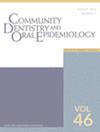Why Aren't Antenatal Care Providers Adopting Oral Health Guidelines? A Qualitative Exploration
Abstract
Objective
The current Australian Pregnancy Care guidelines recommend that antenatal care providers discuss oral health, provide advice and refer women to dental professionals as needed. However, the delivery of oral health recommendations in antenatal settings appears substandard. This study aimed to identify the barriers and enablers influencing antenatal care providers' adoption of the oral health guidelines.
Methods
A qualitative study was conducted using semi-structured interviews with a purposive sample of antenatal care providers in Tasmania, Australia. Data analysis followed a thematic coding method using the Capability, Opportunity, Motivation - Behaviour (COM-B) model and Theoretical Domains Framework to identify implementation barriers and enablers and to inform recommendations.
Results
Twenty-five antenatal care providers participated (midwives n = 14, general practitioners n = 10 and obstetrician-gynaecologist n = 1). Thirty-two explanatory themes were identified and mapped directly to six COM-B constructs and 11 Theoretical Domains Framework domains. Eight main themes were identified as both impeding and enabling when viewed in different contexts: (1) perceived patient knowledge and awareness; (2) professional oral health knowledge, training and skills; (3) awareness of the guidelines on oral health; (4) patient education and professional resources; (5) interprofessional collaboration and support; (6) streamlined referral processes and access to dental services; (7) perceived outcomes of oral health interventions; and (8) perceived professional responsibility related to oral health.
Conclusions
Key strategies include improvements to the promotion and dissemination of relevant guidelines, professional education and training, and development and adoption of oral health-centred models of care to support interprofessional collaboration. Future research should focus on developing brief and sustainable interventions that address antenatal care providers’ practice behaviours.


 求助内容:
求助内容: 应助结果提醒方式:
应助结果提醒方式:


